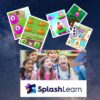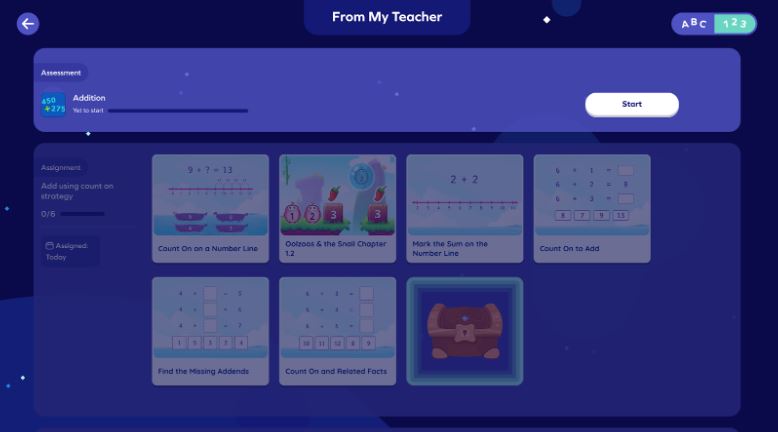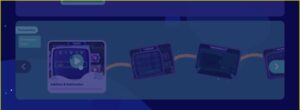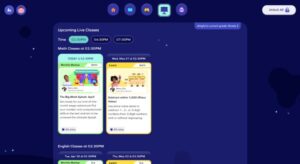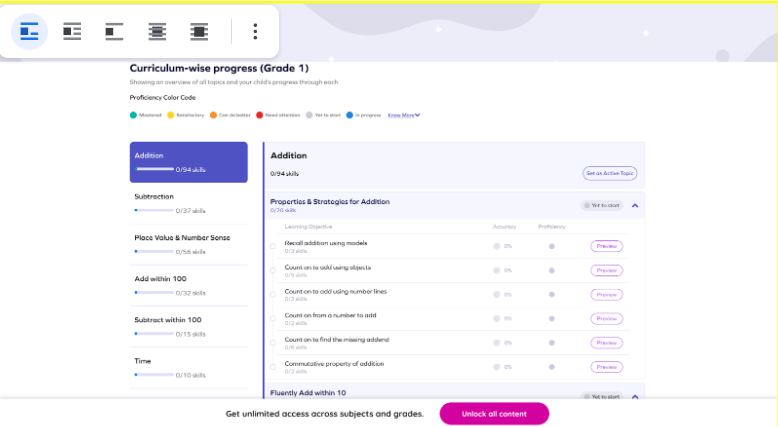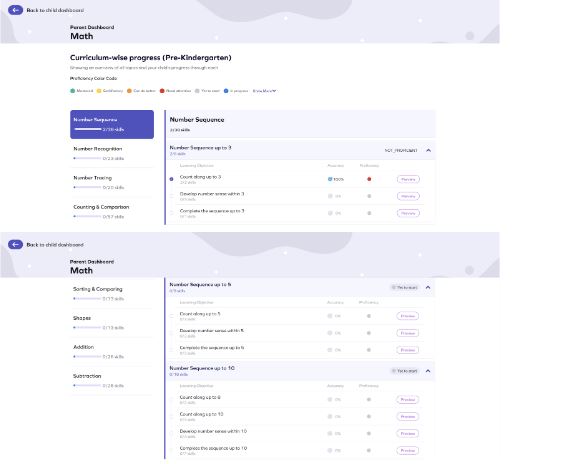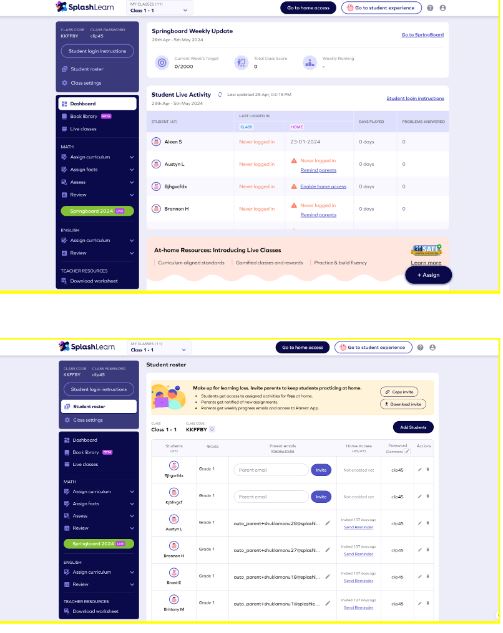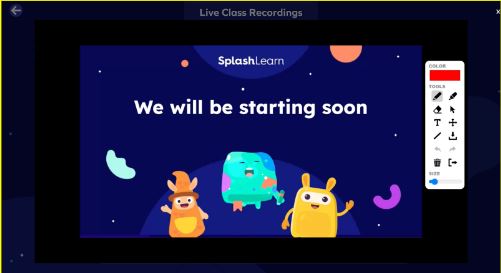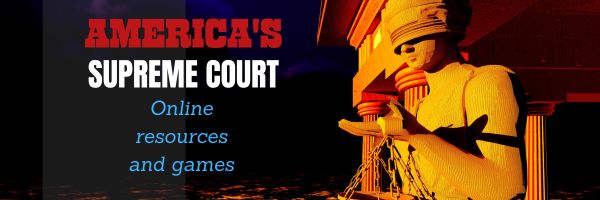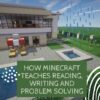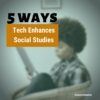Category: Games/Simulations
Why Use SplashLearn in Class?
Ask a Tech Teacher occasionally reviews an education website that caught our eye and seemed to have excellent value for readers. Today, it’s SplashLearn. Here’s an easy-to-read bullet list of what we found:
Platform:
Overview:
SplashLearn is an innovative online learning platform tailored for PreK through Grade 5 kids. With a global reach engaging over 45 million children and 446k teachers, it ingeniously blends the excitement of gaming with the rigor of academic learning; the platform ensures that each session is not only engaging but also deeply educational.
Cost:
- Parents: SplashLearn offers a 7-day free trial, allowing parents to explore its features before committing to a subscription. Subsequent plans start at $7.50/month. You can get started here!
- Teachers: For teachers, SplashLearn is completely free. It includes access to thousands of educational resources without hidden costs or permissions. You can get started here!
Age Group and Subjects:
- Parents: SplashLearn offers Math and Reading curriculum from PreK through Grade 5 for parents.
- Teachers: SplashLearn’s curriculum spans Kindergarten to Grade 5 for Math and Kindergarten to Grade 2 for Reading.
What SplashLearn Offers:
Parents:
- Daily Learning Path: Parents can customize bite-sized daily lessons to fit their child’s schedule.
- Curriculum Alignment: SplashLearn aligns closely with school curricula, reinforcing classroom learning with games and activities.
- Engagement: Interactive content, vibrant colors, and engaging gameplay keep children interested in learning and something for children look forward to.
- Rewards: To further motivate learners, SplashLearn incorporates rewards like coins and access to non-curricular games. These games include puzzles and quizzes that enhance critical thinking skills and offer a fun break from traditional learning.
- Content Types:
- Games: Each educational game on SplashLearn is crafted to strengthen understanding and practice new skills, ensuring that children grasp concepts while having fun.
- Worksheets: An expansive collection of worksheets is available, covering every imaginable skill necessary for school success. These worksheets serve as excellent reinforcement tools.
- Live Classes: Children can learn from expert tutors in live classes that go beyond the standard curriculum, offering advanced learning opportunities and helping students stay ahead. Read more about it here.
- Multiplayer Games: These allow children to challenge and compete with friends, adding a social element to learning that can boost engagement and motivation.
Teachers:
- Compatibility with Other Tools: SplashLearn integrates seamlessly with Google Classroom and Clever, simplifying data import and saving teachers time.
- Free 11,000 Worksheets: Over 11,000 free worksheets across various subjects and levels are available to support teaching.
- Free Assignment Access for Home: Assignments can be accessed at home, enhancing learning continuity between school and home.
- Teacher-Referred Discounts for Parents: Teachers can extend subscription discounts to parents.
- Lesson Plans and Teaching Tools: Detailed lesson plans and tools align with educational standards to aid effective teaching.
Screenshots
- Parents
- Teacher:
How SplashLearn Works for Parents:
- Personalization: From the moment you sign up, SplashLearn customizes the learning experience based on your child’s educational level and preferences through an initial onboarding questionnaire, ensuring content matches their abilities and goals.
- Research-Based and Expert-Designed Content: Developed from educational research, SplashLearn’s curriculum and games align with academic standards, target misconceptions, and include scaffolding to support learners and foster deep understanding.
- Live Classes: Led by expert tutors, SplashLearn’s live classes range from basic practice to advanced explorations, plus creative “out-of-the-box” sessions. These help students advance beyond standard curricula and encourage creative application of knowledge.
- Adaptive Algorithm: A robust adaptive algorithm analyzes your child’s interactions and progress, adjusting content difficulty and type in real-time to match their pace and skill level for an optimal learning challenge.
- Detailed Reports: Detailed reports provide insights into your child’s activities and achievements, outline mastered skills, and recommend future learning steps.
Tips and Suggestions for Using SplashLearn:
- Access to All Grades PreK to Grade 5: SplashLearn allows you to adjust the learning level based on your child’s needs. Whether your child is gifted and needs more challenging material or has special needs and requires a slower pace, you can tailor the content by setting them at an appropriate grade level.
- Integration with Google Classroom and Clever: For schools using Google Classroom or Clever, SplashLearn integrates smoothly with these platforms, ensuring a consistent learning environment between school and home.
- Free Teacher-Recommended Content: Teachers can recommend specific SplashLearn content that students can access at home without charge.
- Automatic Assignments: With just one click, SplashLearn activates assignments, simplifying the process and saving time.
Pros and Cons:
Pros:
- Parents can try SplashLearn for free before committing to a subscription.
- It is completely free for teachers.
- The platform is aligned with educational standards.
- Integrates seamlessly with classroom management tools.
Cons:
- SplashLearn does not currently offer an ELA curriculum for Grades 4 and 5 for teachers.
Closing Remarks on SplashLearn
In conclusion, SplashLearn is a standout educational platform that effectively merges the excitement of gaming with the rigor of structured learning. Despite the minor drawbacks, SplashLearn’s benefits—such as its adaptability and the broad spectrum of engaging content—significantly outweigh these issues. Whether you’re seeking to enrich your child’s educational journey or find supportive classroom instruction tools, SplashLearn is an excellent choice for enhancing learning outcomes and making education fun and impactful.
–Image credit for some–Deposit Photo
Here’s the sign-up link if the image above doesn’t work:
https://forms.aweber.com/form/07/1910174607.htm
“The content presented in this blog are the result of creative imagination and not intended for use, reproduction, or incorporation into any artificial intelligence training or machine learning systems without prior written consent from the author.”
Jacqui Murray has been teaching K-18 technology for 30 years. She is the editor/author of over a hundred tech ed resources including a K-12 technology curriculum, K-8 keyboard curriculum, K-8 Digital Citizenship curriculum. She is an adjunct professor in tech ed, Master Teacher, webmaster for four blogs, CSTA presentation reviewer, freelance journalist on tech ed topics, contributor to NEA Today, and author of the tech thrillers, To Hunt a Sub and Twenty-four Days. You can find her resources at Structured Learning.
Share this:
12 Online Resources About Puzzles
National Puzzle Day is celebrated on January 29th each year. It’s a day dedicated to enjoying and solving puzzles of all kinds, including jigsaw puzzles, crosswords, Sudoku, and various other brain teasers. Puzzle enthusiasts often use this day to engage in their favorite puzzle-solving activities and share their passion with others. Whether it’s a solo endeavor or a group activity, National Puzzle Day encourages people to exercise their minds and have fun with the challenges that puzzles present. If you have any specific questions or if there’s anything else you’d like to know about National Puzzle Day, feel free to ask!
Puzzles are also a great way to practice keyboarding skills like drag-drop, click, and select.
Here are popular puzzles resources teachers are using to teach mouse skills, critical thinking, and more (for updates on this Puzzles list, click here): (more…)
Share this:
The Supreme Court in America
When you think of the Supreme Court, you think of old people in black robes that dispassionately determine the fate of the country’s laws. That’s all true, but there’s more to maintaining law and order than a podium and a gavel. The Supreme Court is the apex of one of three branches in the American government:
- The Legislative (the House and the Senate) passes laws
- The Executive (the President) executes the laws
- The Judicial (all courts in the United States) judges whether laws abide by the Constitution
The Supreme Court consists of nine individuals who are nominated by the President and voted in by the Senate. Once approved, they serve for life, the hope being that this allows them to judge apolitically, based on the merits of the case rather than political leaning. These guidelines are not without controversy but are critical to a healthy, democratic environment.
Share this:
May the 4th Be With You
11 Online Resources About Puzzles
Here are popular puzzles resources teachers are using to teach mouse skills, critical thinking, and more. There are a few for the upcoming St. Patrick’s Day:
- Digipuzzles–great puzzles for geography, nature, and holidays
- I’m a Puzzle–create your own puzzles
- Jigsaw Explorer
 –make your own
–make your own - Jigsaw Planet–create your own picture jigsaw
- Jigsaw puzzles
- Jigzone–puzzles
- Jigsaw Puzzles–JS
- Kindergarten puzzles
- Puzzle—St. Pat’s Puzzle
- Puzzle—drag-and-drop puzzle
- Puzzle—St. Pat’s slide puzzle
Copyright ©2023 usna.wordpress.com – All rights reserved.
Jacqui Murray has been teaching K-18 technology for 30 years. She is the editor/author of over a hundred tech ed resources including a K-12 technology curriculum, K-8 keyboard curriculum, K-8 Digital Citizenship curriculum. She is an adjunct professor in tech ed, Master Teacher, webmaster for four blogs, an Amazon Vine Voice, CSTA presentation reviewer, freelance journalist on tech ed topics, contributor to NEA Today, and author of the tech thrillers, To Hunt a Sub and Twenty-four Days. You can find her resources at Structured Learning.
Share this:
Simulations as a Teaching Strategy
Simulations and games have grown from rote drills using a computer to challenging learning experiences for students that hone problem-solving and critical thinking skills. They are fun for students, keep them engaged, and teach the foundational pieces of a lesson. I
I’ve talked about gamifying elements here and here (and under this tag). One of our Ask a Tech Teacher contributors goes into depth about simulations–what these are and how to use them. The article’s about 1000 words and well worth the read:
Simulations as a Teaching Strategy – Everything You Need to Know
In the diverse and ever-evolving world of simulation, there’s no doubt that tactics such as gamification continue to have a positive impact across a broad range of industries and activities. This is certainly prominent in the workplace, where some 90% of employees say that gamification makes them better at their job and more productive at work. What’s more, employees experience an average 48% engagement increase through gamification, highlighting its ability to impart potentially complex subject matter to individuals.
This is why gamification and wider simulation strategies hold huge value in educational facilities across the globe. But what are the key considerations when leveraging simulation as a viable teaching strategy?
Share this:
How Minecraft Teaches Reading, Writing and Problem Solving
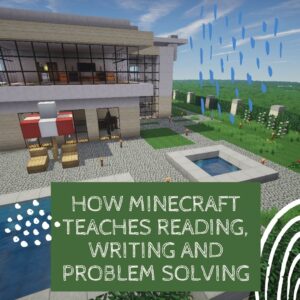 A while ago, Scientific American declared “…“not only is Minecraft immersive and creative, but it is an excellent platform for making almost any subject area more engaging.” A nod from a top science magazine to the game many parents wish their kids had never heard of should catch the attention of teachers. This follows Common Sense Media’s seal of approval. On the surface, it’s not so surprising. Something like 80% of five-to-eight year-olds play games and 97% of teens. Early simulations like Reader Rabbit are still used in classrooms to drill reading and math skills.
A while ago, Scientific American declared “…“not only is Minecraft immersive and creative, but it is an excellent platform for making almost any subject area more engaging.” A nod from a top science magazine to the game many parents wish their kids had never heard of should catch the attention of teachers. This follows Common Sense Media’s seal of approval. On the surface, it’s not so surprising. Something like 80% of five-to-eight year-olds play games and 97% of teens. Early simulations like Reader Rabbit are still used in classrooms to drill reading and math skills.
But Minecraft, a blocky retro role-playing simulation that’s more Lego than svelte hi-tech wizardry, isn’t just the game du jour. Kids would skip dinner to play it if parents allowed. Minecraft is role playing and so much more.
Let me back up a moment. Most simulation games–where players role-play life in a pretend world–aren’t so much Make Your Own Adventure as See If You Survive Ours. Players are a passenger in a hero’s journey, solving riddles, advancing through levels and unlocking prizes. That’s not Minecraft. Here, they create the world. Nothing happens without their decision–not surroundings or characters or buildings rising or holes being dug. There isn’t a right or wrong answer. There’s merely what You decide and where those decisions land You. Players have one goal: To survive. Prevail. They solve problems or cease to exist. If the teacher wants to use games to learn history, Minecraft won’t throw students into a fully fleshed simulation of the American Revolution. It’ll start with a plot of land and students will write the story, cast the characters, create the entire 1776 world. Again, think Legos.
My students hang my picture in the Teacher Hall of Fame every time I let them play Minecraft–which I do regularly. Of course, I provide guidelines. Which they love. It’s fascinating that today’s game playing youth want a set of rules they must beat, parameters they must meet, levels (read: standards) they must achieve, and a Big Goal (think: graduation) they can only reach after a lot of hard work, intense thinking, and mountains of problems. Look into the eyes of a fifth grader who just solved the unsolvable–something most adults s/he knows can’t do. You’ll remember why you’re a teacher.
A note: Any time students use the internet, start with a discussion on how to use it safely. This is especially important with multi-player games like Minecraft (you will close the system at school, but that may not be the case in the student’s home). It is fairly easy for students to create their own servers (requires no hardware, just a bit of coding) and invite friends into their Minecraft world. Encourage this rather than entering an unknown server-world.
In case you must ‘sell’ this idea to your administration, here are three great reasons why students should use Minecraft in school: Reading, Writing, and Problem Solving.
Share this:
Using VR in Schools
Augmented Reality (AR) and Virtual Reality (VR) are buzzwords that every educator wants to know more about. They are two distinct functions. Kathy Schrock, columnist for Discovery Education explains:
Augmented reality layers computer-generated enhancements on top of an existing reality to make it more meaningful through the ability to interact with it.
Virtual reality is a computer-generated simulation of real life… It immerses users by making them feel they are experiencing the simulated reality firsthand.
The differences are actually pretty simple. Virtual means experiencing a world that doesn’t exist. Augmented means adding something virtual to the physical world.
- 900 VR Expeditions — requires the Expeditions app
- Class VR
- CoSpaces
- InMind VR–a sicientific VR game
- Jurassic VR–Aptosaurus VR experience to experience a dinosaur up close
- NearPod VR
- Tour Creator–make a VR tour in Google
- Timelooper. This one will take you back to important moments in history from all around the world.
- Titans of Space app will take your students to the moon.
- Trench Experience VR will take you into the trenches in WWI.
- UnimersiveVR–learn with VR
- VR tours of museums
Ways to use VR
- VR field trips
- for students with Special Needs — The Jackson School in Victoria, Australia has been using the Oculus Rift to help students with special needs and the Silesian University of Technology in Silesia Poland is doing therapeutic exercises with autistic students using virtual reality technology.
- experience careers first hand
- time travel to historic events
- explore the human body
- feed curiosity
Watch this student exploring xxx with VR:
More on VR
Virtual Reality in the Classroom: It’s Easy to Get Started
The Impact of VR on Student Education
The Impact of VR on Student Education
Jacqui Murray has been teaching K-18 technology for 30 years. She is the editor/author of over a hundred tech ed resources including a K-12 technology curriculum, K-8 keyboard curriculum, K-8 Digital Citizenship curriculum. She is an adjunct professor in tech ed, Master Teacher, webmaster for four blogs, an Amazon Vine Voice, CSTA presentation reviewer, freelance journalist on tech ed topics, contributor to NEA Today, and author of the tech thrillers, To Hunt a Sub and Twenty-four Days. You can find her resources at Structured Learning.
Share this:
5 Ways Ed-tech Can Enhance Social Studies Lessons
As is my habit, I spend a lot of time exploring new ways to teach old subjects. Lately, I’ve concentrated on social studies. I chatted with my PLN, browsed forums where I knew efriends hung out, and taught a slew of online grad school classes to teachers who always are willing the discuss their newest favorite social studies tech tool. I picked everyone’s brains and came up with a list of five webtools you definitely must look at:
Classcraft
Some call Classcraft a classroom management tool but really, it’s more about injecting excitement in your teaching and touching on the important social-emotional learning that sometimes gets forgotten. Here’s a great quote I heard in a sponsored video:
“It might sound crazy to you and me but the kids love it.” — Sarah Murphy
The more I dug into Classcraft, the more I understood why Sarah Murphy said what she did. It’s pretty simple. Kids have a passion for learning and playing games. You incorporate that into your passion for teaching by gamifying your middle- or high school classroom. When students and teachers work together, toward the same goals, everyone wins.
The free (fee for Premium) Classcraft doesn’t teach standards or curricula for academic subjects. Instead, it focuses on core SEL (social-emotional learning) skills fundamental to the fullness of the education journey. That means it’s easy to apply to your social studies class. It uses tools already popular in your school — Google Classroom or MS Office 365, a browser, and an app (iOS or Android). You set up different tasks and customize rules to fit class needs. Students work individually or in teams, becoming accountable for their behavior to themselves and their teams. When they achieve goals and/or abide by rules, they earn stuff they want (that you’ve organized beforehand). You can blend Classcraft activities into your existing lesson plans or use those available on the website. Robust analytics (included in the Premium package) allow you to track student behavior over time and compare it with the class average.
Also available: a timer, a class volume meter, and parent features — great basic tools for every class.
ClassroomScreen
ClassroomScreen is probably one of the most robust, versatile, and useful classroom tools to cross education’s “free” landscape in a long time. It will make your social studies lessons run smoother, make them more responsive to needs, and keep students focused on the lesson. When you click on ClassroomScreen.com, it opens a blank screen that is a digital board ready to be displayed on your class smart screen. You personalize it with the most popular tools desired in classroom, all lined up at the bottom of the screen. These include preferred language (you pick from about a hundred languages), customized background, sound level, QR code (for the classroom screen; students scan it in and it displays on any mobile device — isn’t that cool?), a whiteboard, a text tool, a start-stop traffic light, a timer, a clock, a random name picker (for teams), an exit poll, Work Symbols (four options for collaborative student work — work together, ask a neighbor, whisper, and silence), and more. There’s no download, no login, no registration. Simply click the link and get started.
Commonsense Media calls it:
“…the Swiss Army Knife of the classroom…”
I agree. Here’s a video that decodes this already-simple class tool.
Share this:
Math Word Problems
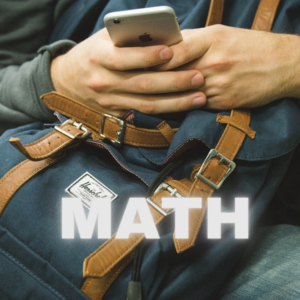 Looking for a more interesting way to teach math in these unusual times? Here are a variety of sites that share Math Word Problems–the real-world way to teach what some see as a daunting subject:
Looking for a more interesting way to teach math in these unusual times? Here are a variety of sites that share Math Word Problems–the real-world way to teach what some see as a daunting subject:
- Expii Solve–math word problems and puzzles, lots of them
- IXL Word Problems–by grade
- Math and Logic Problems
- Math Pickle–puzzles, games, and mini competitions
- Prodigy Math Word Problems–about 120
- Thinking Blocks–free (app)
- Word problems–type them in, Wolfram/Alpha provides the answer and the how-to. Amazing.
- Word Problems from Math Playground
- Would You Rather–more like a justification for decisions using math
Click for more online math resources.

